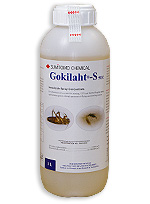Flea and Tick
Fleas are small flightless insects that are able to jump great distances (relative to their size) while ticks on the other hand have eight legs. Both pests however, are ectoparasites (external parasites) that attach themselves to hosts to feed on blood.
Appearance
- Brownish–black
- Adult fleas are 1–4 mm long
- They possess a long, fine proboscis which is used to pierce the skin of their host to feed on their blood
Habits
- Fleas usually bite people in the lower areas such as legs and ankles
- Since they move from one host species to another, there is a risk of transmitting diseases
Life Cycle
- A female flea will lay 4–8 eggs after each blood meal, and can usually lay several hundred eggs during her adult life.
- Smooth, oval light-coloured eggs measuring around 0.5 mm long are usually laid on hosts, but will not be firmly attached.
- Larvae feed on organic matter in environment
- An adult takes a week or two from the larval and pupal phase, but under unfavourable conditions, it can remain in the pupal phase for up to a year
Signs of Infestation
- Seeing fleas hopping on carper or furniture
- Infested animals have reddened skin and may lose hair


